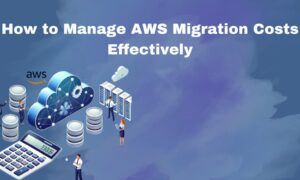An AWS migration is the process of moving your workloads from your on-premises environment to the AWS cloud. This can be done for several reasons, such as to reduce costs, improve performance, or take advantage of the many features and services that AWS offers.
There are a few different ways to migrate your workloads to AWS. You can use AWS tools and services, such as the AWS Migration Hub, the AWS Database Migration Service, and the AWS Server Migration Service. You can also use third-party tools, such as those from CloudEndure or AWS partner vendors.
The process of migrating to AWS can be complex, so planning your migration carefully is essential. You will need to consider which workloads to migrate, how to migrate them, and what changes will need to be made to your on-premises environment.
If you’re unsure where to start, AWS has a number of resources to help you with your migration, including the AWS Migration Playbook.
Why AWS migration strategies?
There are many reasons to migrate to Amazon Web Services (AWS). AWS is a highly reliable, scalable, and cost-effective cloud computing platform. It offers a wide range of services that can be used to build and deploy applications. Additionally, AWS provides many tools and resources to help you manage your cloud resources.
AWS cloud migration strategy can help you save money on your infrastructure costs. AWS provides a pay-as-you-go pricing model that can help you reduce your expenses. Additionally, AWS offers discounts and promotions that can help you save even more.
AWS is also a highly scalable platform. It can quickly scale up or down to meet your needs. This can help you save money on your infrastructure costs, as you only pay for the resources you use.
Additionally, AWS is a highly reliable platform. It has a 99.95% uptime SLA, meaning your applications can always be up and running. Additionally, AWS provides many tools and resources to help you manage your cloud resources.
Migrating to AWS can help you save money on your infrastructure costs, scale your applications to meet your needs, and have peace of mind knowing that your applications are always up and running.
Best practices for cloud migration strategy in AWS
App Architecture
The first step you should take when thinking about transferring applications to the cloud is understanding the application’s architecture. This will give you a clear picture of what needs to be done to ensure a smooth migration process. It would be best to consider factors like components, dependency, and integration structure of your existing application. With this knowledge, you can develop an effective strategy for migrating your application to the cloud.
Adequate storage plans
When selecting a cloud storage plan for your business, it’s essential to understand the options available and how they might best fit your needs. Some notable cloud storage providers are AWS, Microsoft Azure, and GCP (Google Cloud Platform). Each offers different plans and data tiers that you can select from. But taking the time to understand each one carefully will help you avoid any problems down the road.
24/7 monitoring
The cloud environment may be new and more advanced for your existing applications. As a result, it’s crucial to monitor the functionality of your applications continuously to ensure they can handle all the changes and work seamlessly in the new environment. Additionally, your monitoring software for these applications should be compatible with the dynamic cloud environment.
Multi-cloud model
The multi-cloud method is beneficial because it helps you avoid potential problems with using a single cloud. For example, both private and public clouds have their own advantages and disadvantages, but using a multi-cloud approach lets you take the best parts of each one to create a custom solution that is perfect for your business needs. This way, you can get the most out of your investment and ensure that your company’s data is always safe and secure.
Analyzing performance
Migrating to the cloud can be a complex process, so this is a critical step to take. If your application encounters any issues and doesn’t run smoothly after the migration, you’ll need to explore other strategies. Before running a pilot phase post-migration, you must find and fix all performance-related problems. This way, you can test whether the applications provide a stable user experience during the pilot phase.

































